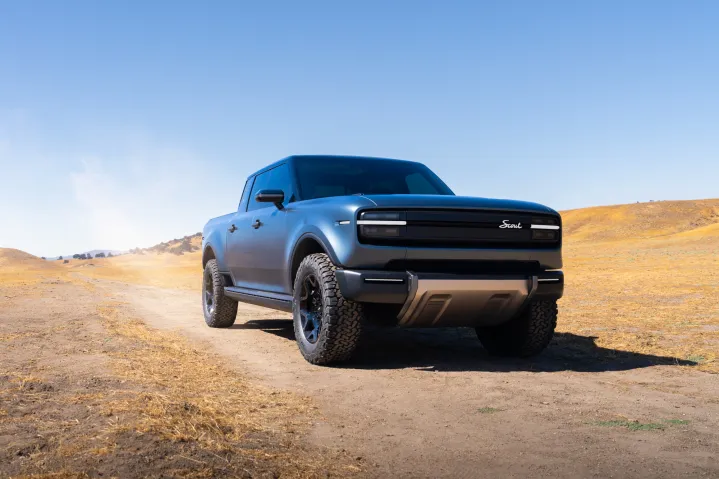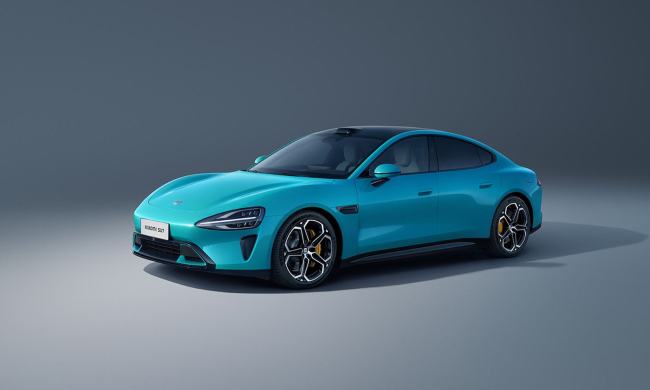Along with price, perhaps one of the biggest dissuaders for potential customers of new electric vehicles is range anxiety. It makes sense — electric vehicle range is getting better, but EVs still take a lot longer to charge than it takes to fill a tank with gas. Plug-in hybrids are one way to mitigate this, but it turns out there’s another form of hybrid that helps ease range anxiety — extended range EVs, or EREVs.
We’ve already seen a few EREVs from several different companies. Most recently, Scout Motors unveiled the Traveler SUV and the Terra electric truck, both of which are available as optional EREVs. But what exactly is an EREV, and how does it help make range less of an issue? Here’s everything you need to know.
EREV basics
Put simply, an EREV leverages both an electric battery and a gas generator to extend the range of a vehicle. EREVs are electric first, and the battery inside an EREV is the only thing that drives the wheels. That means EREVs can get all the benefits of normal electric vehicles, like the longer all-electric range and the superfast responsiveness that EVs have become known for.

So, where does the gas generator come in? Well, the generator is basically used as a power source for the battery. Instead of directly driving the wheels, a gas generator in an EREV is used solely to deliver power to the battery. Typically, gas generators inside of an EREV are much smaller than the engine that might power an internal combustion engine (ICE) vehicle. Because they’re used much less than in an ICE vehicle, they also have lower emissions and don’t necessarily have to be used at all for the vehicle to be drivable. EREVs can function basically as electric cars, allowing the driver to only fill up the gas tank when needed for a longer trip.
Keep in mind that you’ll want to use the gas generator every now and then to ensure that the fuel in the tank doesn’t degrade and to keep the fuel system in good condition. Many EREVs have an automatic maintenance mode that will activate periodically to ensure this happens.
What’s the difference between an EREV and a PHEV?
Of course, there’s another type of electric vehicle that makes use of both a gas engine and an electric battery. That’s the plug-in hybrid or PHEV. So, what’s the difference between the two?

EREVs are electric first, meaning their primary focus is being an electric vehicle. PHEVs are not electric first. Instead, they offer a very short electric range and use electric motors to improve performance or for shorter all-electric trips. Typically, PHEVs exhibit the worst aspects of electric vehicles, with a short range, slow charging speed, and limited power from the electric motor. The trade-off, of course, is that you can refuel a PHEV in a matter of minutes at a gas station, and the vehicle will run perfectly fine considering the fact that the engine powers the vehicle alongside the electric motor rather than relying solely on the electric motor itself.
That’s not the case with EREVs. EREVs can be used completely as an EV in most scenarios, offering long electric ranges and the performance associated with high-end electric motors.

Put simply, EREVs rely only on the battery to power the vehicle, with the gas generator kicking in to charge the battery as needed. PHEVs, on the other hand, rely mostly on the combustion engine to power the vehicle, blending the power from the engine and electric motors in the vast majority of situations, and offering a short electric range.
Could I just power my EREV with gas?
Potentially. This largely varies depending on the system under the hood. For many EREVs, the gas tank can charge the battery as fast or faster than you can use energy from that battery. So theoretically, you could just fill the tank and drive. That said, doing so would be much less efficient than charging the battery, and the range would be very limited.

Typically, the gas tank in an EREV is relatively small, and in most cases, you should only expect to get around 100 to 150 miles of range from the gas tank. That said, in an emergency where there are no charging stations around and you need to get somewhere, you could potentially refill a tank of gas and be perfectly fine for another 100 miles or so. It’s worth checking your specific EREV model, though, and seeing how fast it can charge the battery using the gas generator.
EREV outlook
EREVs seem like a natural evolution for the crowd who prefers to buy a plug-in hybrid over an all-electric vehicle. We’re moving toward fully electric vehicles, and it seems unlikely that EREVs have an ultra-long-term future ahead of them. However, they’re an excellent option for those concerned about range and who don’t want to fully do away with the ease of filling up a tank of gas, but still want to mostly rely on electric power.
Of course, for now, there are very few EREVs available. We’ll have to wait and see if they become more popular, or if by the time more models come out, it’s much more convenient to simply own an electric vehicle.



